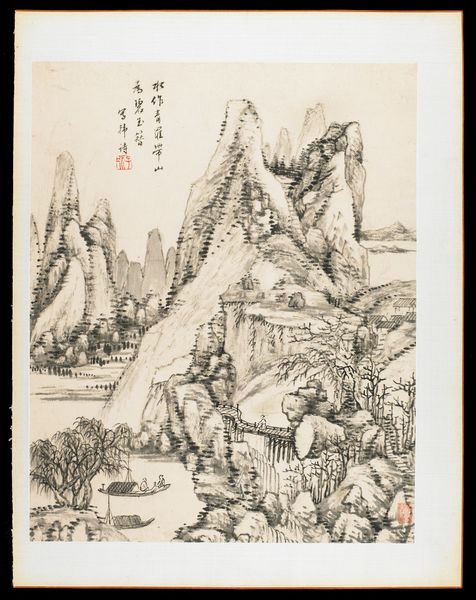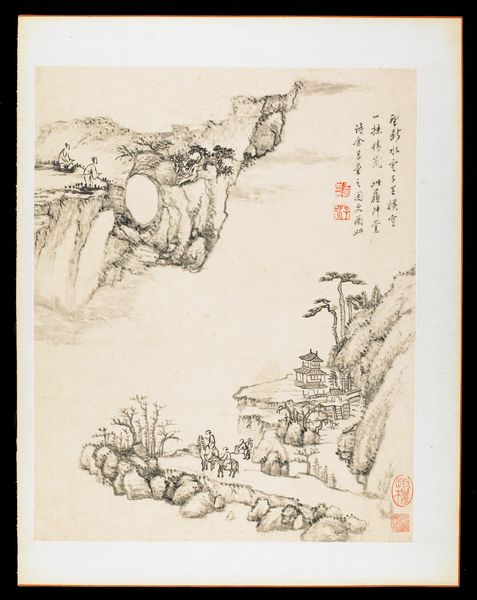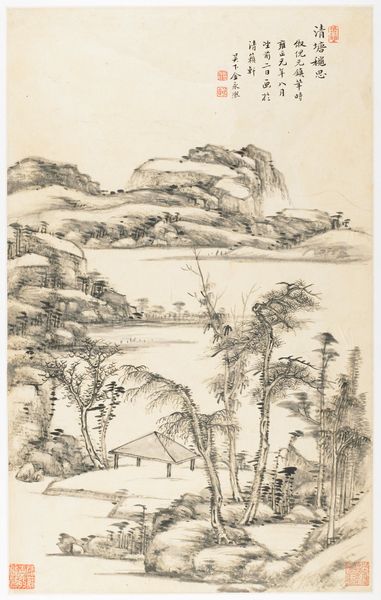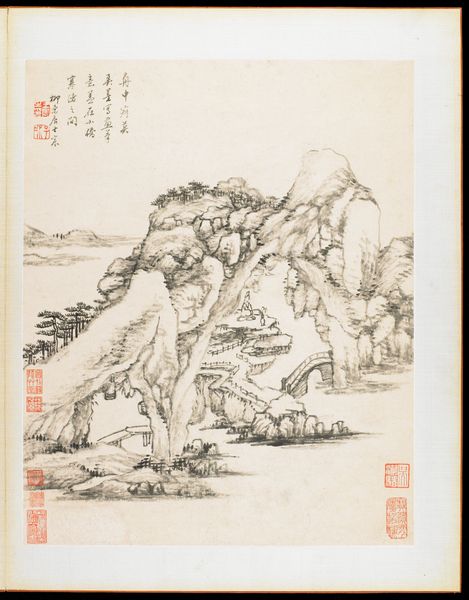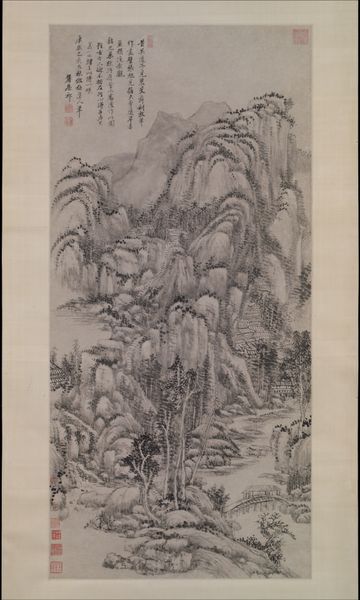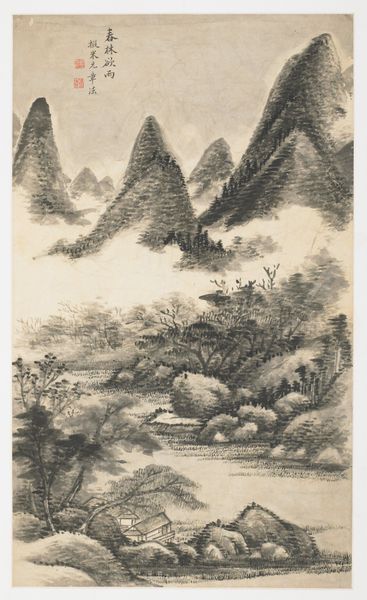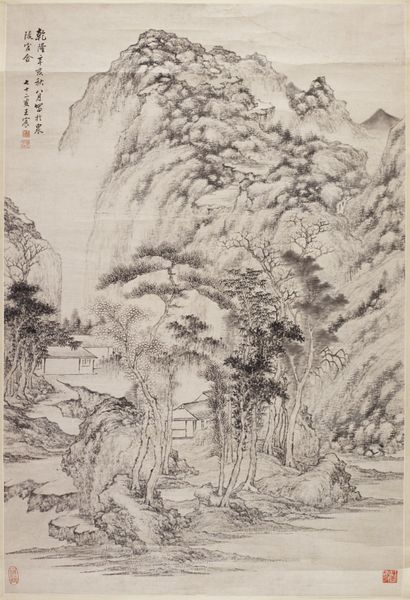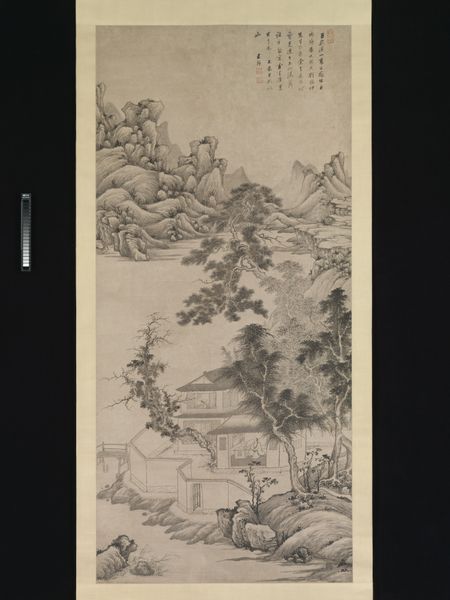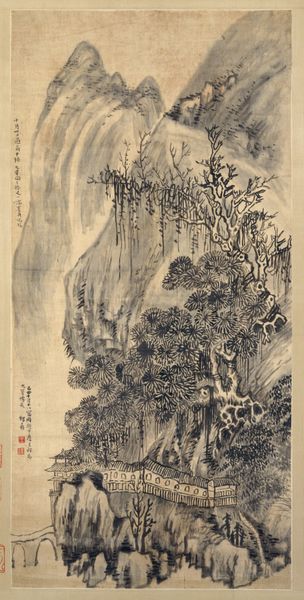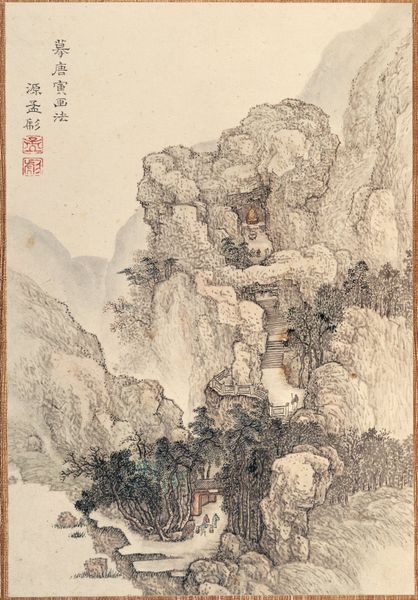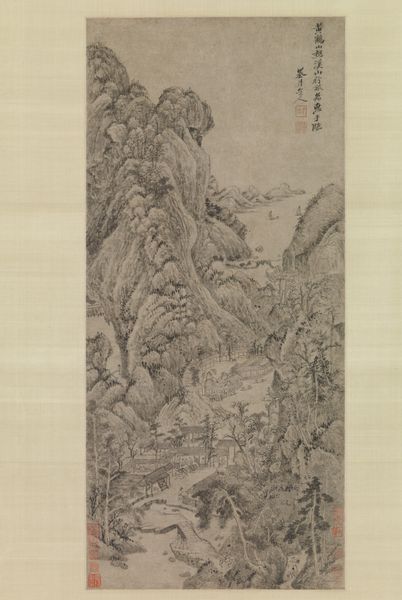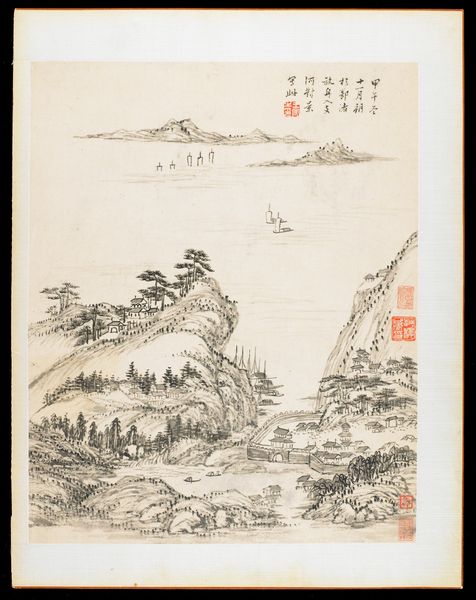
drawing, tempera, paper, ink-on-paper, ink
#
drawing
#
ink drawing
#
ink painting
#
tempera
#
asian-art
#
landscape
#
paper
#
ink-on-paper
#
ink
Dimensions: 16 7/16 x 13 3/16 in. (41.75 x 33.5 cm) (image)19 3/4 x 15 5/16 in. (50.17 x 38.89 cm) (leaf, overall)19 15/16 x 15 15/16 x 1 1/4 in. (50.6 x 40.5 x 3.2 cm) (entire album, overall, closed)
Copyright: Public Domain
Wang Chen created this ink on paper album leaf in the 18th century, during a time when China was ruled by the Qing dynasty, a period marked by both prosperity and cultural conservatism. Wang Chen, as a literati artist, would have been deeply immersed in the intellectual and artistic traditions of his time. His landscape doesn't just depict a scene; it reflects a sophisticated understanding of philosophy, poetry, and history. Imagine the weight of tradition, the pressure to conform, yet also the yearning to express individual vision within such a structured environment. The monochrome palette and delicate brushwork evoke a sense of quiet contemplation, inviting the viewer to journey into a world that balances realism and idealized nature. How does this image speak to the complex negotiation between personal expression and cultural expectations in Wang Chen's world?
Comments
minneapolisinstituteofart about 2 years ago
⋮
Born in Kiangsu province, Wang Ch'en was a descendant of the great literatus Wang Shih-min and a great grandson of the artist Wang Yuan-ch'i. He served for a while in the Grand Secretariat and as a prefect in Hunan province. Wang's illustrious family heritage strengthened his reputation as an orthodox painter and he is one of the so-called Four Minor Wangs of the later Ch'ing. Wang's inscriptions here indicate that the basis for this album of large landscapes was the natural scenery of Ch'u, a Warring States (480-221 BCE) kingdom located south of the Yangtze River. In 1774, Wang was serving as a low-level official in this region. His inscriptions also mention earlier poets and painters whose conceptual and stylistic influences along with natural scenery inspired the various scenes here, which were based on sketches made at the sites themselves. The inscriptions read: 1) The landscape of Ch'u is extremely scenic. I came across one place and sketched it but neglected to ask its name. 2) One morning I entered the sea in search of Li Po; looking in vain among the paintings of mere mortals for the "Immortal of Ink." 3) The ceremonial burial mounds and Szechuan are neat. This is a scene of entering the gorge. 4) I have used the brushwork of Shu-ming (Wang Meng) to paint the style of Old Man Sung-hsueh (Chao Meng-fu). There is resemblance because they are from the same family.
Join the conversation
Join millions of artists and users on Artera today and experience the ultimate creative platform.
